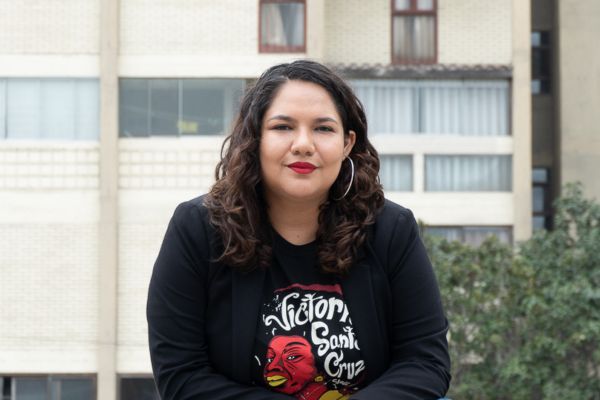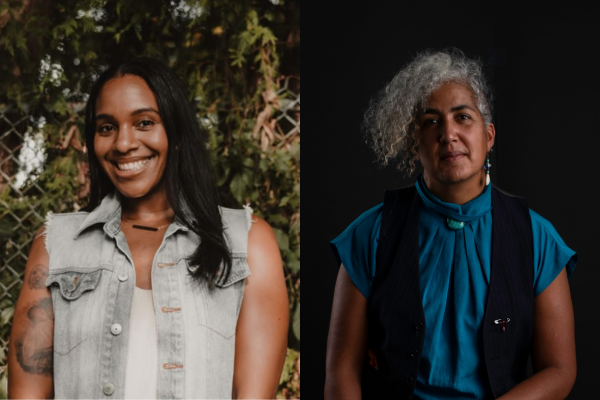Project spotlights the impact of Afro-Peruvian women in Lima through its music industry


Growing up in Lima, Peru with an Afro-Peruvian family, Roxana Escobar Ñañez was always surrounded by music. Like many households, it was a staple in her home.
A PhD student in the department of geography and planning, Escobar Ñañez’ research outlines how music and performance of Afro-Peruvian women are at the center of Lima’s cultural identity.
“Music as a staple of Afro-Peruvian identity, particularly in Lima, is something that I believe has been reduced to a stereotypical characteristic of the Black population of Peru,” Escobar Ñañez says.
“It’s not something that is seen as a way that we have constructed the nation and the development of urban life.”
Afro-Peruvian women played a key role as singers and performers in Lima since the beginning of the 1900s. But this is largely overlooked when considering the city’s development and placed under the umbrella of showbusiness.
To understand the role of Afro-Peruvian women in Lima’s history, Escobar Ñañez’ PhD dissertation spotlights criollo music – traditional traditional to working class neighbourhoods in Lima where Black, Indigenous, Japanese and Europeans lived together. She will consider factors such as where Black life is present in Lima, how Blackness is involved in the construction of the city, and how Black women drove the genre to popularity.
The project is supported by the 2022 Connaught PhDs for Public Impact Fellowship Program and the 2022 IDRC International Doctoral Research Award, which allows doctoral students across Canada to pursue international field work. Escobar Ñañez is supervised by associate professors Tamara Walker of the department of history, and Matthew Farrish of the department of geography and planning.
Criollo music was born in domestic spaces that characterized Afro-Peruvian life and joy, and later made its way to the rest of Lima, Escobar Ñañez explains. Immersive spaces to listen to criollo music – and some of the city’s internationally renowned performers – remains a core element in Lima’s tourism sector.
Notably, the Afro-Peruvian community shaped the city’s infrastructure through everyday activities as far back as the 1700s.
“Lima relied on the urban infrastructure of Black bodies, which became time and space – from the Afro-Peruvian women walking through neighbourhoods in the morning and singing that they had bread and coffee to the last song at night saying it was time for bed,” Escobar Ñañez says.
“If you take away these activities, you wouldn’t have the urban life that we have now.”
To document the role of Afro-Peruvian women and the arts in Lima, Escobar Ñañez travelled to the city to conduct interviews with performers. Participants included acts such as Marina Retto, the Lopez sisters and Rosita Guzman. Many consistently highlighted the importance of honouring the beauty and the complexity of main composers of criollo music such as Felipe Pinglo Alva and Manuel Acosta Ojeda.
Part of her PhD research – and keeping with the tradition of oral histories – Escobar Ñañez is producing a podcast with these interviews. Her goal is to preserve and celebrate Lima’s history by merging traditional and digital practices. The development of the podcast is supported by the Critical Digital Humanities Institute’s 2023/2024 Graduate Fellowship Program in Critical Digital Humanities.
So far, Escobar Ñañez has interviewed 25 local singers, the oldest being an 85-year-old performer still active in the business. Overall, Escobar Ñañez found that performers of an older demographic act as gatekeepers of traditional criollo music, while new performers experiment with alternative sounds, like jazz, salsa and the blues.
“Older musicians still sell CDs at their shows. This generation has been on TV and perform everywhere in the city, from domestic spaces to Independence Day parades. As Afro-Peruvian women, the carry the pride of the music,” Escobar Ñañez says.
“The younger generation sing and dance differently to the same criollo composers and turn to digital methods to make new sounds, whereas the older generation are very specific about what they sing and how.”
Travelling to venues and house parties to study criollo music, Escobar Ñañez not only documented cultural experiences but also conversations between musicians with memories and knowledge that dated back to the 1900s. While interviewees also shared stories of encountering racism and misogyny, Escobar Ñañez says that musicians noted pride in their work as a factor that drove them forward.
With notions of pride a repeated finding, Escobar Ñañez is now working on a paper about how to conduct field work about Black women in Latin America.
“When we study populations that clearly demonstrate different ways of existing, including sounds and conversations is one way of research that I want to continue developing,” Escobar Ñañez says.
Listen to a playlist curated by Escobar Ñañez of music by Afro-Peruvian women on Spotify or Apple Music.







